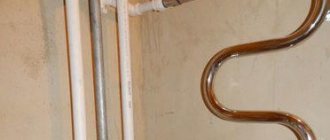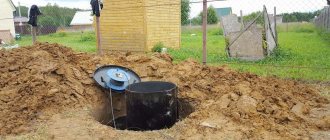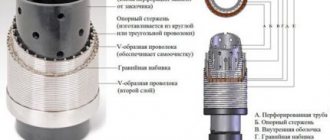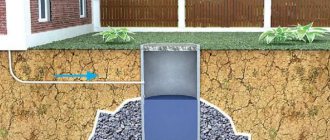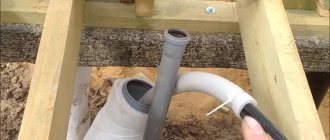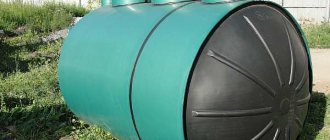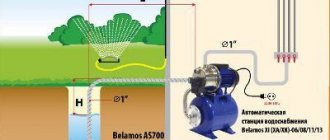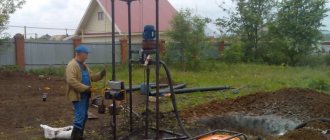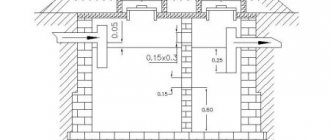Extracting drinking liquid from an autonomous well, located at a remote distance from the central highway, is the primary task of land owners before starting construction work on building a house. Of course, drilling a hole is not something everyone can afford, but the investment will pay you back within a few years. As a result, you will receive high-quality clean water with optimal mineralization. Many citizens get scared when they initially see the arrival of a dirty stream with various suspensions. We assure you that this is how it should be. There is no reason to worry, since the problem is solved by pumping the well after drilling and casing in a short time. Depending on the depth of the trunk and the properties of the soil, the process can last from 5-6 hours to several weeks.
Why is this event required?
The structure definitely needs cleaning, since the brown-colored liquid released to the surface is absolutely unsuitable for domestic and agricultural needs. Imagine how moisture, over centuries, formed its path deep underground, making its way between various layers of rocks, thereby being purified naturally and enriched with various minerals (this depends on the geographical latitude of our country). And here, overnight, the movement of the riverbed changed; accordingly, the liquid rushes to the surface and at the same time swirls the soluble and insoluble inclusions and organic matter found in its whirlpool. In addition, silt deposits and large volumes of sand can accumulate at the bottom of the column in the source. The only way out of this situation is to pump out the dirty substance.
How long does it take to pump a well after drilling?
Unfortunately, drilling companies do not provide cleaning services; they only pump out the turbidity that is formed as a result of the passage. You will have to take the final operation into your own hands. Let’s immediately say that the process can be fleeting or protracted, since the result depends on many factors:
- Depth of the well to the aquifer.
- The chemical composition of the layers through which the path was laid.
- Pumping equipment power.
- Drillers' professionalism.
No one will give you an exact date for finishing the work; this will happen when the water starts flowing continuously or at intervals of 30 minutes. The event may take days or weeks. But under no circumstances should you stop, as your efforts will not be crowned with success and the source will instantly be covered in dirt. In practice, there are often cases when cleaning an artesian well took months. Subsequent examination revealed the following violations:
- The submersible pump is installed incorrectly (too high from the bottom).
- The equipment captures silt and sand. Low mounting can cause the device to burn out.
- Pumping occurs in close proximity to the mouth of the source (that is, the liquid again enters the shaft).
What is buildup and why is it needed?
Well pumping is an action associated with long-term pumping of dirty liquid mixed with silt from the casing pipe.
During drilling operations, the upper and inner layers of the soil are disturbed. Aquifer veins are found in various layers. This can be perched water or rainwater. The source gradually fills with turbid liquid containing loam, sand and other sediments.
Dirt and other contents can only be removed by lifting it up the shaft. Pumping in this case has a cleansing mission.
The need to pump up an artesian well is due to the need for drinking and clean water. If you start using a newly drilled mine or one that has stood idle for a long time, unpleasant consequences may arise. The first water cannot be used.
The liquid underground is constantly moving, carrying various components, such as:
- sand,
- loam,
- small clay particles,
- sludge and other substances.
When drilling, the formation is broken, in which a cavity is formed, and water and dirt rush into it. The filter around the casing and in the borehole itself cannot completely cope with the cleaning problem.
Stages of well build-up after drilling
If you have entered into an agreement with a professional source development company, then include a clause in the agreement regarding the provision of cleanup services. This way you will save a lot of time and money. If refused, you will have to perform the operation yourself.
Getting ready for the process
Citizens of Russia who do not have the financial ability to pay for the service of a firefighting or sewage disposal truck are faced with a pressing question: where to get a large container for transferring dirty substances.
There is an effective method that has been proven over the years - digging a special pond-sump. If you turn on the pump every hour (except at night), and let it run for two/three minutes, the sump will not overflow. But when the flow begins to flow continuously, then you can supply water to the house.
Choosing equipment
MBFT-75 Membrane for 75GPD
SF-mix Clack up to 0.8 m3/h
SF-mix Runxin up to 0.8 m3/h
Put aside the purchased submersible device intended for pumping drinking liquid until better times. It is not suitable for dirty work, since not all models can withstand excessive load. Large inclusions will instantly clog it, and you will end up with a non-repairable item. For pumping, it is better to purchase a pump with a centrifugal operating principle. Get advice on your choice from competent companies, such as Voda Otechestva. Experts will tell you why you should not buy snail-type submersible devices or vibration options, and will select the most suitable inexpensive unit for your purpose. Retail chains offer special products designed for moving dirty suspensions. They are called “fecal and drainage”. These gadgets are perfect for pumping out substances that have many foreign inclusions. But it is worth paying attention to the maximum possible lifting column. Since such products are usually not able to create sufficient pressure.
Pumping the well
We proceed to the important operation for which the preparatory work was carried out:
- Typically, the pump is equipped with a long cable. Check whether this is enough to complete your task. Otherwise, it is necessary to eliminate the problem by extension.
- The drainage device lowers to the level of suspended matter with the possibility of slow immersion. This ensures correct operation without overload.
- If possible, it is necessary to position the object in the center of the well so that it does not touch the walls. This will allow optimal removal of sediment.
- During the process, you need to monitor productivity; if it decreases, you will have to lift and rinse the device.
- All these actions are performed until a clean flow is obtained.
Siltation and quicksand: methods of protection ↑
The initial pumping is just the beginning of cleaning activities, since over time the bottom and walls of the shaft will silt and the filters will become clogged with sand and clay. Subsequent maintenance is necessary both to keep the equipment in working condition and to improve the quality of water from the well. For example, the period of groundwater movement is considered stressful, when melting snow causes it to rise. Together with the liquid, both floaters (layers of sand) and harder sediments in soil layers move, as a result of which “plugs” often appear. To avoid this, you will again need a sufficiently powerful, already proven unit.
Correct installation of the filter to protect the pump from silting
There are several methods of prevention:
- intensive use (more active operation of equipment);
- cleaning from silting and sand deposits (as during rocking);
- hydraulic pressure method using a pump.
So, the main factors when choosing a pump for pumping (definitely a submersible one) remain its technical characteristics: power, productivity, long-term ability to work without interruption, versatility. In addition, it is worth considering the composition of the soil and the depth of the mine.
How to pump out sand from a well if flushing is delayed
During drilling, it is possible to enter complex formations. These are most likely large sand layers, which are unstable by definition. If you are trying to ensure a continuous water supply, but the level is constantly decreasing, you may want to consider installing a cartridge that prevents large particles from entering the barrel. The problem of such layers can be solved by radical strengthening of the walls or a filter in the drainage area. Another way to eliminate this is to deepen the well to stable rocks with mandatory casing.
Why can a well silt up?
Sooner or later, any hole collects solid particles and closes. Approximately the same processes occur in any trunk. Groundwater flows only in the direction of pumping; everything that it brings with it precipitates to the bottom of the source. If the surrounding rock is prone to washing away, then you will have to deal with this problem constantly. Only the installation of filter systems can cope with this for a certain time. Limestones, sandstones and a fairly large number of rocks provide stable access to liquid without impurities.
Another important problem can be considered the rare use of the source. The entire surface of the earth tends to be a perfect sphere and over time, gravitational forces will tighten the mine if you do not make any efforts to prevent this.
Why is rocking necessary? ↑
The drilling process disturbs the soil layers, as a result of which the rocks fall to the bottom - exactly where liquid from the aquifer subsequently begins to flow. This is a natural order, and you can’t do without construction dirt. Between the clay and sandy loam layers, water that is not crystal clear also flows; for this reason, installing a filter is a necessary condition for the functioning of the source. A certain amount of foreign impurities, like clay-sand suspension, will always affect the quality of water and be the main cause of filter clogging and mechanism failure.
Well construction
To delay the repair or replacement of mesh parts, a scheduled pumping is carried out, during which the following actions occur:
- lifting crumbled soil to the surface;
- washing away dirt from the bottom of the mine;
- drainage of wastewater into a drainage ditch.
During the event, not only the lower segment of the pipe is washed, but also the layer of soil bordering the mine, so subsequently the water entering the sump becomes much cleaner and more transparent.
Leveling methods
A freshly drilled source has a wall structure that is prone to movement under the slightest influence. Groundwater displaces small solid inclusions in the direction of minimum resistance. Until a stable frame is formed, tiny particles of nearby rocks will flow into the well. Therefore, after the creation of the facility, it is necessary to carry out a set of measures to ensure the consumption of sufficiently clean water. There are different options for solving this problem.
AMETHYST - 02 M Residential building for up to 10 people or up to 2 cubic meters/day.
Aeration unit AS-1054 VO-90
Main table dispenser AquaPro 919H/RO (hot and cold water)
How to properly pump a well after drilling with your own hands: vibration pump
The simplest and most frequently used method is to carry out such operations using standard dacha equipment. Of course, this is not the most effective method and after completing the process you will probably have to throw away the device. But this device has its advantages. Vibration provokes an acceleration of the washout of unstable nearby layers. The pump itself is capable of processing sufficiently contaminated liquids without a sharp loss of performance. Perhaps the main limitation is the height limit of the pillar. Not bad for cleaning domestic wells no deeper than 10-15 meters.
Bleeding with two electric pumps
In the professional field, loosening of lower deposits using liquid pressure is widespread. To do this, the water pumped out by the first pump is sent to the sediment to remove solid deposits, and after that the same substance is injected under sufficiently high pressure into the siltation point. This operation ensures effective mixing of the lower layers and radically facilitates the suction of suspended matter.
For domestic use, we can recommend the cyclic use of a simple home pump. In this case, it is necessary to have a large container to collect pumping products. At intervals that allow for sedimentation, water is directed deep into the trunk and mixes the lower horizons. After this, it remains to quickly pump out the resulting suspension.
The pressure and direction of the jet when breaking rocks at the base of the well is considered a fairly important factor. Therefore, preliminary washing is carried out using special nozzles that ensure maximum capture in space of the spherical surface of the liquid intake point.
Moisture return method
This is a fairly effective method, but requires serious equipment. The idea is that source purification is accomplished by pumping excess fluid under very good pressure through the main barrel to flush unnecessary contaminants to the surface. In this case, all the pulp exits into the space between the rock and the casing. The sinuses are partially cemented and the cavities are filled, which has a beneficial effect on preventing the entry of atmospheric precipitation into the source. But this cannot be the final action to ensure the purity of the resource. In any case, you will have to use classic leaching, since there is no natural leaching of easily moving particles by groundwater. And during use, as is the norm, they will definitely reach the suction point. This problem can be eliminated by repeatedly using the technique at intervals of an hour or three or alternating with the vibration method.
Compressor technology
This option may be an alternative to all of the above methods. If the well is sufficiently abundant and the column is normally high, then it is quite possible to lift the liquid with all the suspensions outward by pumping in a decent amount of air. This does not work with wells with a diameter of 20 centimeters, but with holes of 5-10 cm it is quite possible to carry out the procedure. In this case, the equipment does not fail, since it does not come into contact with the abrasive. It is worth noting that an ordinary household compressor is not suitable for the process; the flow rate must be at the level of a serious industrial unit.
Why does a new well require pumping?
Since on weak soil layers (gravel, sand, etc.), wells are drilled with flushing with a bentonite solution, which strengthens the walls of the mine shaft. The flow of flushing material into the aquifer is inevitable, which creates the need to pump the prepared well. On average, the duration of pumping a sand well is one day.
It is most difficult to “pump” a water well on a sandy or gravel water carrier, and not at all because the drilling fluid serves as an extensive pollutant of the formations and, under pressure, is carried far from the well itself. The main problem may be an incorrectly selected casing filter, and when pumping the well, small grains of sand will constantly clog the pump. When pumping such a well with a vibration pump, one can only hope that large fractions of sand and gravel will stick around the filter part of the column, allowing water to pass through and not fine sand to pass through.
Also, a well on clay can rock for several days, sometimes for several weeks. Everything will depend on the type of clay and its water saturation. When using, for example, a vibration model of a submersible pump, the “clay” water intake shaft will produce contaminated water for a very long time. But if you pump such a well with a centrifugal pump, then the output of clean water will be achieved in a minimum period of time. In this case, the well filter should not allow sand to pass through. A centrifugal pump will quickly die when pumping water with sand.
In general, the rate of clean water output as a result of pumping seriously depends on the depth of the wellbore, soil section, correctly selected casing filter and water pump.
To summarize: the pumping time depends on the professionalism of the drillers, the technology used for drilling and flushing the well, the soil passed through the mine shaft and the type of aquifer.
If water drilling was not carried out professionally, then the source of contamination of the well may be intermediate geological layers due to poor sealing of the casing. Of course, each specific situation with a well must be studied locally. However, in rare cases the situation cannot be corrected and the well will need to be drilled again.
Which submersible pump will be most ideal for the task?
From what we have written above, it becomes absolutely clear that creating your own water supply point is not a cheap undertaking. It is necessary to invest considerable funds for geological exploration of the area, drilling, casing the structure, carrying out communications to the house (digging a trench, laying pipes and connecting to entry/exit zones). You will also have to spend money on the purchase of two pumps: for domestic use on an ongoing basis and for temporary dirty work. The latter option will have to be thrown out after the end of use, although experts say that rehabilitation is possible. In any case, it is unlikely that you will be able to understand the intricacies of the nuance on your own. To avoid mistakes and excessive spending of money, we recommend that you seek help from organizations that have been working in this area for a long time and have many positive reviews from clients. For example, managers will give you comprehensive answers to all your questions and help you choose a model from a wide range of domestic and foreign devices presented on the Russian market.
Main table dispenser AquaPro 929CH/RO (cooling/heating)
Floor dispenser AquaPro 311 (empty, without cooling)
Floor-standing dispenser AquaPro 6207CH (cooling/heating/room temp.)
Please note that vibration, centrifugal and screw pumps are suitable for this purpose.
When choosing a device, compare the characteristics, since this determines the efficiency of operation, productivity, duration of the procedure and will ultimately affect the final cost.
We present you with several important parameters that you need to consider when purchasing:
- A submersible pump handles the load better than a surface pump, since the latter option is designed for pumping a well no more than 10 meters deep and is extremely susceptible to small suspended particles.
- Pay attention to power. It must be high so that the device can cope with large volumes of liquid.
- Price. Here it’s up to you to decide whether you will overpay for an expensive model or take a budget device. In any case, there is a possibility that both products may fail ahead of time.
Recommendations for carrying out work
There are several recommendations that will simplify your work and help you avoid making annoying mistakes.
Height. An important parameter is the hanging height of the pump. If it is not lowered deep enough, it will not be able to capture sediment, pumping only clean water, giving a false result. Diving too deep immediately after drilling can lead to very rapid silting of the pump, breakdown and reduced performance, in addition, there is a possibility of capturing gravel from the filter, and it will take much longer to pump the well.
Recommendations for pumping a well
Flushing. Regardless of the severity of the contamination, periodically remove the pump and rinse it by supplying normal clean water inside the system. This will reduce the likelihood of breakdowns and increase work efficiency.
Fastening. To immerse the pump, use a high-quality, durable cable. It is advisable to take a thin metal cable, ideally a winch.
Attach it securely to the pump, if possible - even weld it a couple of times. Losing a pump at depth will be very unpleasant morally and financially.
Drainage Drain the water as far as possible from the hole; it would be a good idea to connect the pipe to a central water supply or other drain. If water is poured nearby, it will be absorbed back, again silting up the well.
Mistakes that are made when pumping
Mistakes are rare, but they exist if a citizen decides to act independently without consulting with specialists:
- Wrong pump selected.
- The pump is installed extremely high or low from the aquifer with incorrect alignment (when the device touches the walls of the casing).
- Uncontrolled and prolonged operation leads to silting of the hole or depletion of the resource.
- The operation was completed prematurely, meaning there was no clean flow from the pump. This threatens the settling of sand, abrasive and clay masses to the bottom.
- Construction of a sump in close proximity to the mouth of the source. In this case, the pumped-out substance may overflow in the opposite direction.
Be attentive to these nuances and your work will be rewarded with clean water suitable for drinking and cooking!
What to do if pumping takes too long?
It is impossible to predict how much time it will take to flush the aquifer system.
The working process normally lasts from 10 hours to 2-3 days. If the aquifer is located on sand or limestone, the shallow source is cleaned within 1-2 days. Pumping a deep artesian well takes a long time - from 2-3 weeks to 2 months.
After pumping the water is dirty.
If the water does not become clear for a long time, sand and clay deposits constantly come out, experts do not recommend stopping the process and drilling a new mine. Bleeding must be continued after checking the pump installation.
If the compressor is suspended too high or too low, problems can occur. In some cases, all the water and clay are scooped out of the excavation, resulting in a completely cleaned well.
